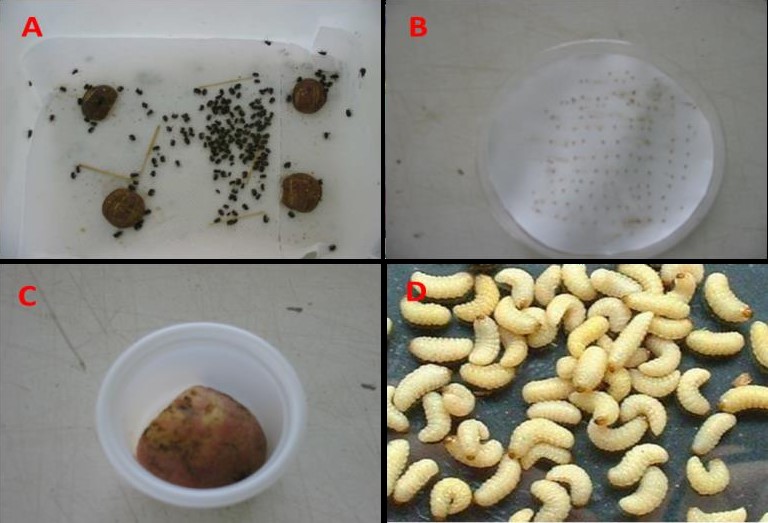Entomopathogenic nematodes of the genus Steinernema and Heterorhabditis for the biological control of white grubs (Premnotrypes vorax, Hustache) in potato (Solanum tuberosum L.) in Ecuador. ninguno
Main Article Content
Abstract
ABSTRACT
Soil samples from potato-pasture, potato-other crop, storage, natural vegetation and fruit production systems in the provinces of Carchi, Cotopaxi, Chimborazo and Tungurahua, Storage, Natural vegetation and Fruit trees in the provinces of Carchi, Cotopaxi, Chimborazo and Tungurahua, with the objective of prospecting native populations of entomopathogenic nematodes (NEPs), in order to have the necessary elements for the search of biological control strategies of the white grub (Premnotrypes vorax, Hustache) pest of Solanum tuberosum. A rearing of Galleria mellonella was established for the isolation of NEPs from soil samples. At each sampling point, three sub-samples were taken at a depth of 10 to 15 cm in an area of approximately 4 m2. Soil samples were placed in 500 cm3 plastic containers with five G. mellonella larvae. Larvae with symptomatology of NEPs infection were placed in White traps for subsequent recovery. For NEPs of the genus Steinernema the "One on One" method was used and for NEPs of the genus Heterorhabditis the "Five on One" method was used. A total of 357 soil samples were evaluated for NEPs isolation using G. mellonella larvae. A total of 28 populations of NEPs, of which six correspond to the province of Carchi, eight to the province of Chimborazo and ten to the province of Cotopaxi and 4 samples from the province of Tungurahua. According to the symptomatology of the larvae of G. mellonella, thirteen populations were identified as nematodes of the genus Heterorhabditis and fifteen of the genus Steinernema.
Key words: Prospecting, Galleria mellonella, Xenorhadus, Photorhabdus, White trap, bioluminescence, insecticides.
Downloads
Article Details
- Serie Zoológica está protegida bajo derecho autoral en cada número por lo que, si los autores requieren publicar gráficos, datos o información ya publicada en Serie Zoológica, se debe pedir autorización escrita a los editores.
- La Carta de Presentación y Compromiso debe también indicar que el manuscrito fue elaborado con los datos originales obtenidos por los autores, Serie Zoológica se deslinda de responsabilidad por el uso de datos de terceros sin permiso previo, esto es responsabilidad exclusiva de los autores de los artículos.

